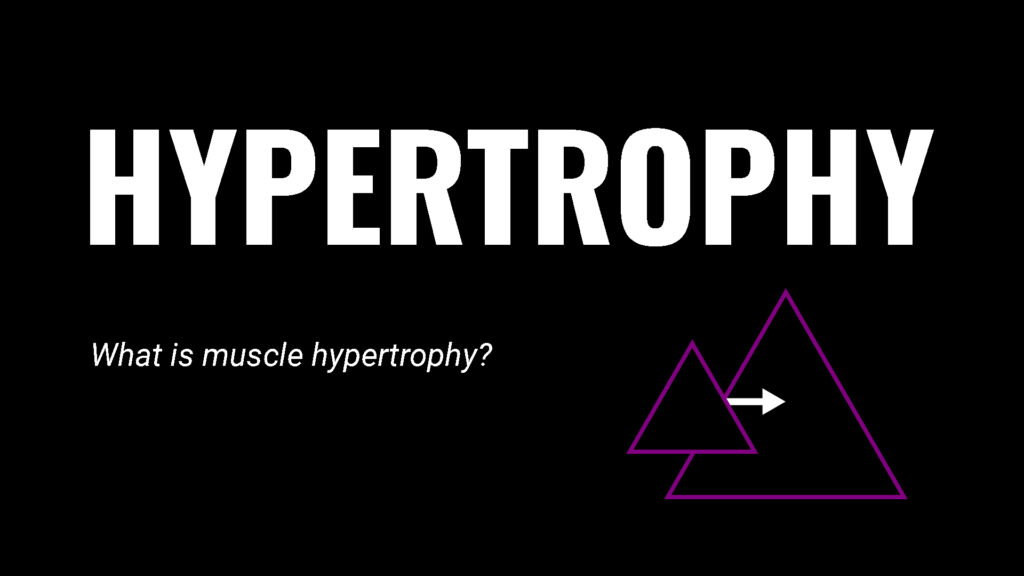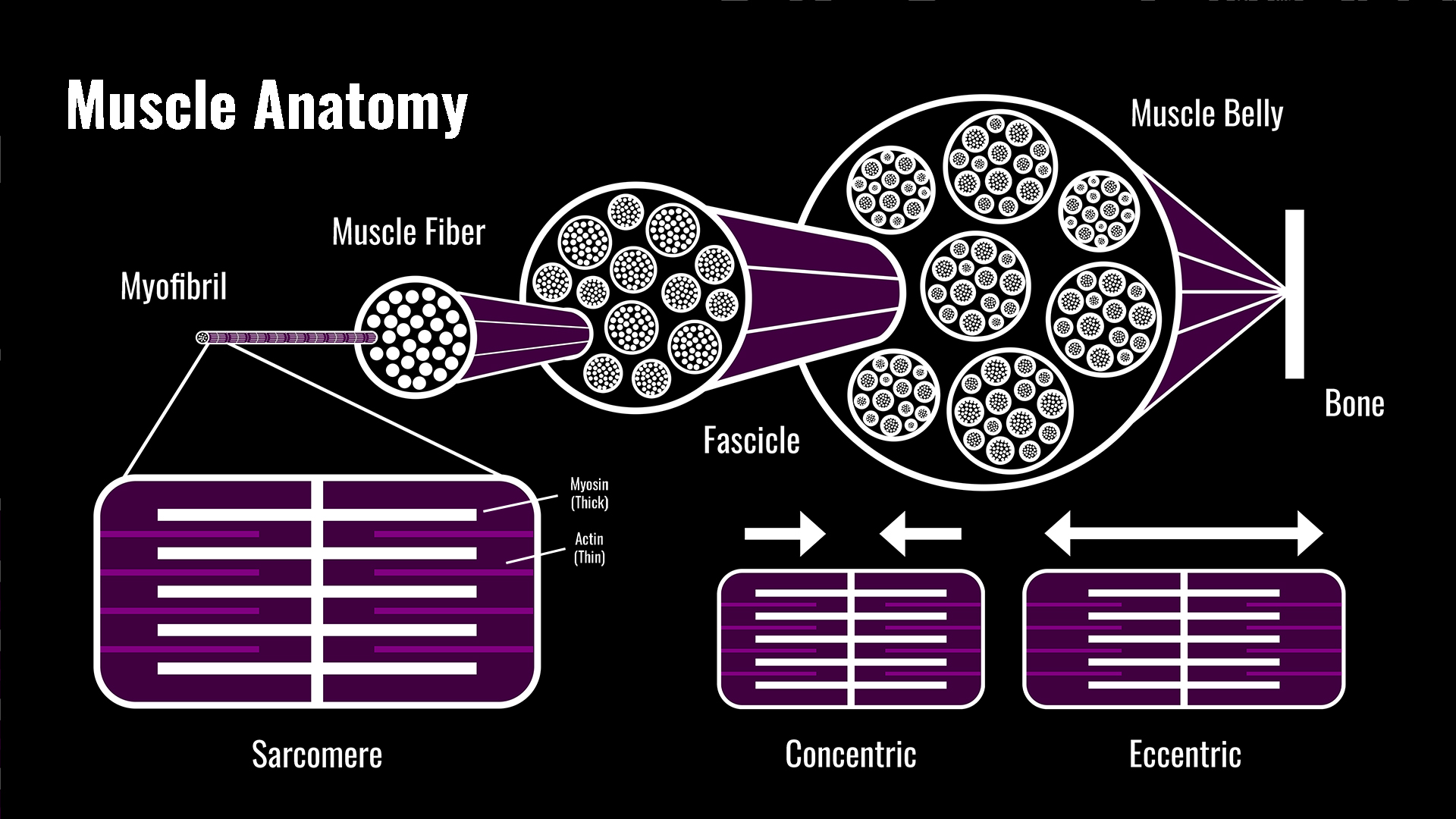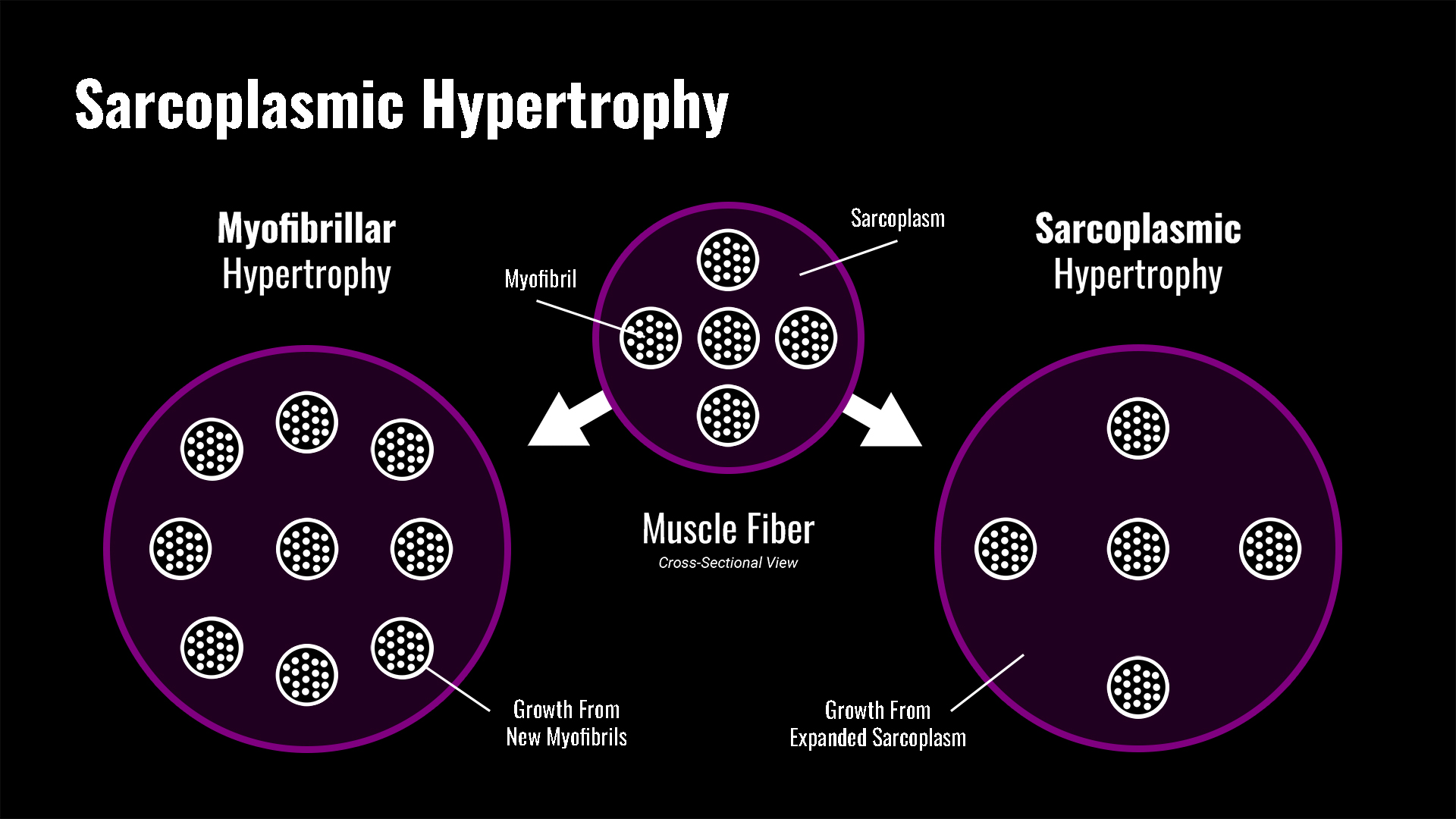
What is Muscle Hypertrophy?
Hypertrophy is the growth of a tissue due to the enlargement of its cells. Different tissues in the body can experience hypertrophy, so this term does not exclusively refer to muscle growth. A second term to know is hyperplasia, which is also the growth of a tissue, but hyperplasia is caused by an increase in cell number, not cell size. So to answer the original question, skeletal muscle hypertrophy is an increase in muscle size caused by an enlargement of muscle cells.
So if we don’t gain more muscle cells by lifting weights, what’s growing in the muscle cell to make it bigger? And what is a muscle cell? To answer these two questions, we need to learn just a little bit about muscle anatomy. If we know what our muscles are made of, we can better understand how and why they grow.

On the far right in the image below, we have the entire muscle belly and you see how the full muscle attaches to bone through the tendon. In the middle, we have a cross-sectional view that shows what’s inside the muscle. As you can see here, our muscles are made of fascicles that contain many muscle fibers. And it’s the muscle fiber that is the muscle cell. Each cell, or muscle fiber, consists of bundles of individual myofibril strands that are formed by a series of linked segments called sarcomeres. Inside every sarcomere is an interlaced arrangement of the contractile proteins actin and myosin. Muscle contractions occur when myosin binds to actin and slides the two structures past one another, drawing each end of the sarcomere closer to the middle of the segment.
When we lift weights or do any type of resistance training that causes muscle hypertrophy, our muscles can add new sarcomeres to the middle and/or the ends of myofibrils. This is called adding sarcomeres added in series. Sarcomeres can also be added in parallel when existing myofibril strands split lengthwise to form entirely new strands. But whether we’re adding sarcomeres in series or parallel, the growth of new physical structures is called myofibrillar hypertrophy. Myofibrillar hypertrophy occurs through a process called muscle protein synthesis, and it’s what drives our growth and training progress. The more sarcomeres we add through muscle protein synthesis, the greater our strength output and total muscle mass will be. However, sarcomeres gained through myofibrillar hypertrophy are not the only contributors to cell size.

We can also experience muscle hypertrophy through an increase in the size of the sarcoplasm of each muscle fiber. This is called sarcoplasmic hypertrophy. The sarcoplasm is the fluid, nutrient, and fuel-rich interior space of each muscle fiber and it surrounds all of the myofibrils within a cell. While our muscles can grow through sarcoplasmic hypertrophy and this adaptation does offer some great benefits like increased glycogen storage, it probably shouldn’t be the singular focus of our training. A well designed strength and hypertrophy program will inevitably induce sarcoplasm growth, but exclusively chasing the pump with a high-rep, high-damage routine may miss out on some of the myofibrillar hypertrophy caused by heavier weight and the mechanical tension it creates.

However, sarcoplasmic hypertrophy isn’t entirely useless. It’s possible that the expansion of the cell due to sarcoplasmic hypertrophy may help aid in the growth of future myofibrils. It is theorized that the expansion creates more “empty” volume in the muscle cell and that unused space makes it easier to add sarcomeres in parallel. Think of it as a path of least resistance type of thing. I’ve got that paper linked below if you’d like to read more.
This is a quick and easy post that just covers the basics of hypertrophy and muscle growth. If you’d like to check out some workout programs that help put theory into practice, head over to the Workout Programs page and have fun.
References
Roberts, M. D., Haun, C. T., Vann, C. G., Osburn, S. C., & Young, K. C. (2020). Sarcoplasmic Hypertrophy in Skeletal Muscle: A Scientific “Unicorn” or Resistance Training Adaptation?. Frontiers in physiology, 11, 816. https://doi.org/10.3389/fphys.2020.00816